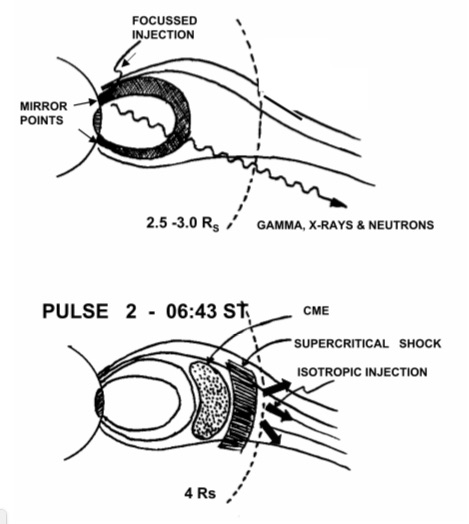
McCracken, K. G., H. Moraal, and P. H. Stoker, Investigation of the multiple-component structure of the 20 January 2005 cosmic ray ground level enhancement, Journal of Geophysical Research (Space Physics), 113, A12101 (2008) (ADS)

(click on the image for a larger version)
Date: 2019 November 14
Where are solar cosmic rays (SEPs) accelerated, and how do they get out into the heliosphere where they can be detected and/or wreak havoc? By far the dominant theoretical ideas about this are associated with the shock wave driven outwards ahead of a CME; the presence of these shock structures has been known since the 19th century in the form of "storm sudden commencements", whereby the geomagnetic field records a sudden impulse.
The cosmic rays themselves can, in rare cases, arrive almost as fast as the flare photons do, except that the particles must follow the field and not on an (almost) straight line. In these cases a GLE ("ground level event") occurs, and its particle signatures differ from those expected from the shock itself. This cartoon tries to distinguish the processes, based on RHESSI observations of coronal gamma-ray emission that imply closed magnetic structure, near the Sun, containing a reservoir of high-energy particles. These could possibly escape onto open fields from this reservoir, "focused" outwards by the diverging coronal fields. The shock acceleration would then basically fill up the heliosphere with a more isotropic component.
. The specific times mentioned in this cartoon ("ST" probably means "Solar Time", referring to the source) are for the flare SOL2005-01-20, a paradigmatic event.